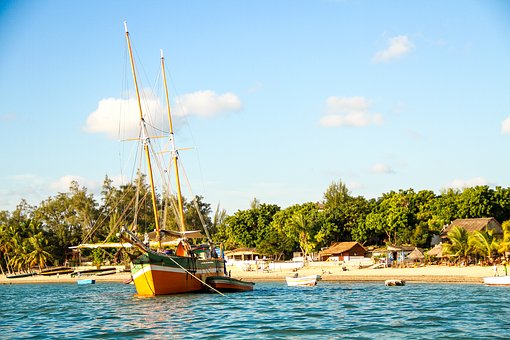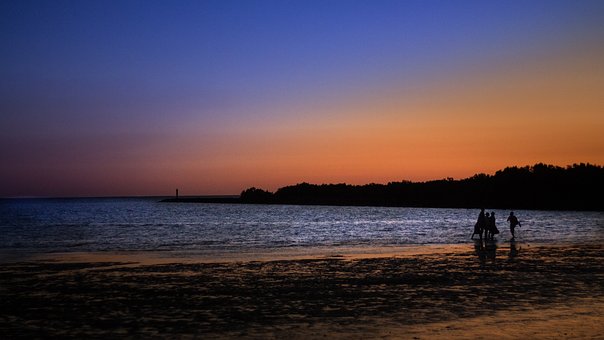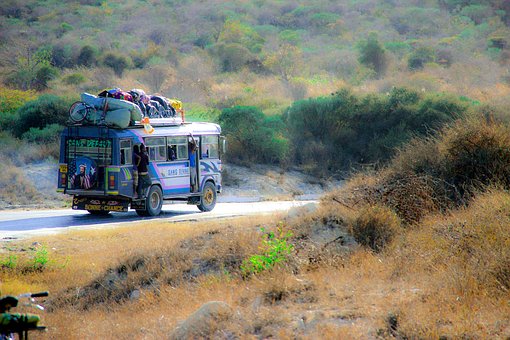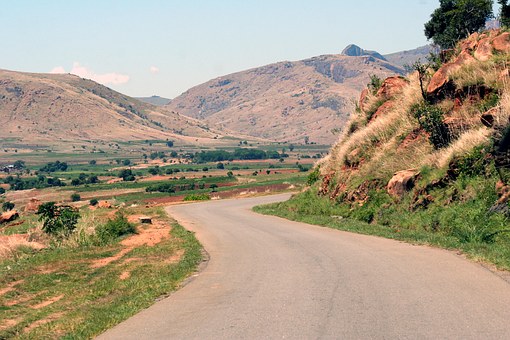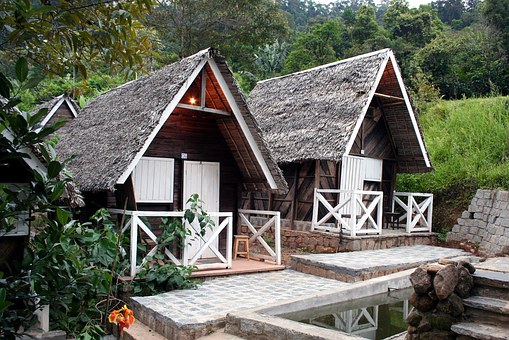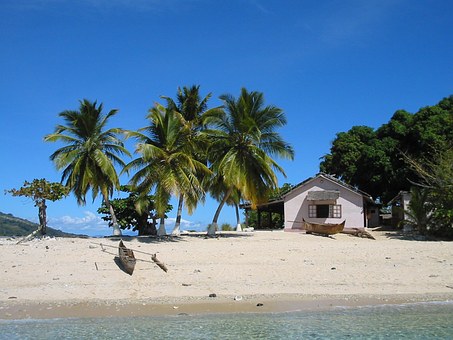Backpacking in Madagascar
Travelling in Madagascar means discovering and exploring one of the largest island states in the world. Off the east coast of Africa in the Indian Ocean is this huge island and used to be a French colony. The island has a coastal strip of about 5000 kilometres, in the centre there is a huge plateau, where you can hike through the highest point of your backpacker trip, the 2876 meter high Maromkotro. In the coastal region you will find numerous tropical rainforests.
During a round trip around the island you will have many opportunities to visit the sights of the island state. You will encounter a unique nature, which has indescribable characteristics due to the climatic conditions. Unique plants and a diverse animal world are waiting for you. There are relics from long ago, which belong to the UNESCO natural and cultural heritage. Don’t miss the Royal Hill of Ambohimanga and the holy city of Hovas.
Your journey as a backpacker in Madagascar is beautiful, adventurous, unusual and sometimes exhausting, as there is an inadequate transport infrastructure. It is a poorly functioning rail network, and there are few road connections that can be used all year round. Therefore, your journey from A to B will always be an adventure. Antananarivo is the capital with about 1.9 million inhabitants and at the same time the geographical, administrative and industrial centre. A total of 24.9 million people live on the 587,295 square kilometre island.
You can withdraw money at the various ATMs in the cities. However, you will have problems with an EC card, as it is usually not accepted. In order to minimize costs when withdrawing money, it is worth purchasing a free travel credit card in addition to a conventional credit card, since there are no foreign deployment fees for the third-party use of the card.
When backpacking through Madagascar you will find a temperate climate in the interior. At the coasts it becomes rather tropical to subtropical. The official language is French and Malagasy. Therefore, if you speak French, you will have little difficulty understanding each other. You won’t starve in Madagascar either. Because there are food stalls everywhere where you can get Madagascan cuisine.
Culture in Madagascar
The culture in Madagascar is shaped by the different peoples who came to the island from Africa, India, Arab countries and later from European areas. The different indigenous peoples and tribes have preserved their independent cultures, customs and rituals until today. Unique is the fact that the different ethnic groups can live together peacefully, almost symbiotically despite their different cultures. Certainly the uniform language has also contributed to this.
A backpacker trip through Madagascar means to experience an impressive tolerance. You give birth to people with different roots and cultural backgrounds. They present themselves cheerful, open and very friendly. There are 18 different tribes in Madagascar. These include the Antaifasy, the Antaimoro, who live on the coast, the Mikea, a legendary primitive people and the Tanala, who live in the forests. As a small hint: You should never ask people about their tribal affiliation, as this is considered rude.
According to western standards, Madagascar lives in poverty and is therefore considered a developing country. The social structures quickly become clear to you. While in the capital Antananarivo you are confronted with poverty in many places, there are only a few steps away areas where there are luxury villas with a western appearance. The rich upper class lives here. The middle class stands out less because they lead a more modest life.
The further away you are from the capitals, the clearer the social conditions become that look different. In the countryside, people have been living for many generations in villages and communities that are completely autochthonous and independent of the technological development of the cities. Here you will immerse yourself in the living conditions of these Madagascans, who survive well with traditional agriculture and are thus excluded from the classic rich-poor differentiation.
Trading is a good thing on the markets. Therefore you should never pay the first price without having haggled first.
More Backpacking Information about Madagascar
During your backpacking trip through Madagascar there are many different things to experience. The costs are correspondingly high. But on average you can comfortably cover your daily needs with 30 to 60 Euro.
Madagascar is covered by a 20 meter thick, red layer of earth, why it is also called “red island”. Touristically it is only little developed but nevertheless an experience, which remains long in the memory. Sun-hungry backpackers get their money’s worth at the palm-fringed beaches in the home of the lemurs. Colourful coral reefs invite to unique dives.
There are numerous national parks with a unique flora and fauna. If you want to get from A to B quickly, you will need to plan for more money. In order to travel cheaply, you should take this rule of thumb to heart: “The faster, the more expensive! If you have time, you’ll save money! That’s not only for the transport, but also for the overnight stay.
There are different overnight accommodations. You can find real bargains, where you can spend the night for about 3 Euro. The average price for an overnight stay in a hostel is between 8 and 10 Euros.
Madagascar offers you a rich, satisfying cuisine. Especially local dishes you should definitely try. Thus you get a large portion of rice with sauce, meat, vegetables and different, hot spices with each meal.
One can only visit Madagascar during the backpacking. But much more interesting is if you get involved with the culture. You’ll be surprised how different life is on the island. On a shopping tour you’ll get wonderful handicrafts as well as gemstone and shell jewellery or small, hand-carved sculptures. Make sure that your souvenirs do not fall under the Washington Convention on International Trade in Endangered Species of Wild Fauna and Flora. Otherwise there may be problems with the home giant.
German citizens need a visa for Madagascar. This will be issued at the airport upon entry and is valid for 90 days. What else you need to know as a backpacker in South Korea can be found under Visa & Vaccinations.
Backpacker Budget auf Madagascar
For your backpacker trip through Madagascar you can manage well with 30 to 60 Euro per day. Life is much cheaper than in Western Europe, North America and Japan. The national currency is Malagasy Ariary (MGA). It is divided into 5 Iraimbilanja. The Ariary is available both as coins and banknotes.
For a simple lunch you pay on average about 3 Euro, in a simple restaurant it is about 5 Euro. The higher the class, the more expensive it becomes. You can get the local beer THB for about 1 Euro. In restaurants and bars it becomes clearly more expensive. For a coke and other soft drinks you pay around 0.60 euros. Bottled water is especially cheap. However, you should rather inverse in mineral water for around 0.50 euros, as you tolerate it much better and protect yourself from stomach and intestinal infections.
Taxi driving Bus driving on Madagascar
In many countries it is recommended to take taxis for the transfer from the airport to the hotel. So there are also buses that take you from A to B. In Madagascar, traveling by taxi and bus is very different, as it is not always easy to get around with motorized vehicles. Therefore it can be quite a good option if you take a rental car for your backpacking trip. On the one hand you can drive yourself or book a four-wheel drive vehicle with an experienced driver. The latter option includes all costs such as fuel, rental prices and the driver.
There are two types of taxis in Madagascar. On the one side you will find taxi-bes (faster and more comfortable) and on the other side taxi-brousses (bush taxis), which are much cheaper, but also slower. Outside the cities of Antananarivo and Fianaranrsoa there are standard prices. Thus you pay for a hlabe hour journey approximately 17 euro.
Buses drive on Madagascar
Buses run all over the island. The long-distance buses for longer distances are often overcrowded and rather unreliable. With the Madbus buses you can travel more comfortably. They run between Toliara via Antananarivo to Soanierana Ivongo and from Morondava to Antsirabe. For a trip from the airport to the city you pay about 3 euros. A distance of 250 km will cost you about 4 Euro.
As an alternative you can also use rickshaws, so-called pousse-pousses, tuk-tuks or carriages in the city centre. However, you should negotiate the fares in advance.
Domestic fares on Madagascar
Domestic flights to Madagascar are sometimes necessary as the island is very large and your travel time is limited. There are more than 200 airports or runways, which seem to provide a dense network for domestic flights. The connections of the only operating airline Air Madagascar are unfortunately very limited. Thus, some cities of the middle highlands are not served at all.
Domestic flights need very good planning for backpacking. In addition, you must also be aware of the risks that await you on such flight adventures. Flights are often postponed at short notice without you being notified. A simple domestic flight costs between 300 and 350 Euros if you book it locally at the airport.
Rail travel in Madagascar
Travelling Madagascar by train is a very special experience for backpackers, as the railway operates on two independent rail networks. From the capital Antananarivo a train line runs through indescribable landscapes on side lines down to the port city Tamatave. A second train line, called FCE, connects Fianarantsoa Côte Est, past Fianarantsoa, with the small town of Manakara on the Indian Ocean.
Both lines are mainly used for the transport of goods. Regular passenger service on the trains is severely restricted. From the capital Antananarivo, passenger trains have not been running for many years. Similarly, no passenger train runs on the Antananarivo – Antsirabe line.
The reason for this is that the Madarail railway company gives priority to freight traffic on the northern line because it is much more lucrative. Travellers are only taken by Moramanga in the direction of Tamatave. The so-called jungle express on the south line lacks locomotives and enough rolling stock to travel this route. You can find out at which times the jungle express runs here (link does not work anymore). A ride with the train from Fianarantsoa to Manakara costs about 3,50 Euro.
Backpacker Routen auf Madagascar
As a backpacker in Madagascar you will come into contact with a unique culture as well as multi-faceted flora and fauna. This is due to the long geographical isolation. In this unique animal world you will find lemurs, falanuks or fossas. Poisonous snakes, on the other hand, are rare. In the rainy season travelling becomes adventurous when you use taxi-brousses.
When travelling on Madagascar you get very close with the locals and also with animals. To explore there is an infinitely long coastal strip with adjoining tropical rain forests and a gigantic high plateau, which projects at the highest place 2876 meters over the sea level. The capital Antananarivo, also affectionately called Tana, is loud, hectic and very stuffy. There are some architectural highlights to discover.
Especially exciting are the different national parks, which you should not miss. Besides a unique animal world you will find an indescribable nature that will enchant you. What should you not miss during your backpacking trip to Madagascar?
Route 1: The classic (15-20 days)
- 2 days Tana, explore the uniqueness of the capital. Pure shopping is the order of the day.
- 2 days exploring Miondrivazo and the national park Tsingy de Bermaraha.
- 1 day boat trip on the Tsiribihina
- 1 day discover Morondava and admire the avenue of the Baobabs.
- 3 days discover Ile Sainte-Marie, the island capital Ambodifototra and the pirate cemetery.
- 1 day with the Pyroggenboot cross and explore Ile aux Nattes.
- 2-3 days comb the Andasibe National Park and observe Indiri lemurs.
- 2 day exploring the Ranomafana National Park with a private driver in the primeval rainforest.
- 2 Day Fianarantsoa, discover the religious centre of Madagascar and visit special sights.
Route 2: Backpacker Intensive Trip (up to 30 days and more)
- 3 days Tana, explore the uniqueness of the capital. Pure shopping is the order of the day.
- 4 days discover Miondrivazo and roam the Bongolava mountains.
- 2 days to explore the Tsingy de Bermaraha National Park.
- 2 day boat trip on the Tsiribihina and experience nature up close.
- 3 day discover Morondava and marvel at the avenue of the Baobabs.
- 3 days to discover Ile Sainte-Marie, the island capital Ambodifototra and the pirate cemetery.
- 2 day relaxing in the Natural Pools on Ile Sainte-Marie and enjoying the most beautiful beach of Madagascar.
- 2 days with the Pyroggenboot translate and Ile aux Nattes explore.
- 4 days comb the Andasibe National Park and observe Indiri lemurs.
- 2 days exploring the Ranomafana National Park with a private driver in the primeval rainforest.
- 3 days Fianarantsoa, discover the religious centre of Madagascar and visit special sights.
Travel times in Madagascar
Due to the size of the island and the hilly structure there are different weather conditions, which differ considerably from region to region. Basically the climate is tropical, but in the highlands or in the coastal region it is different. Therefore the travel times for the different regions are also different. There are no seasons as in Germany, but only dry and rainy seasons.
On the whole island the highest cyclone danger exists between January and March. In the months of April, May, September and October you will find optimal conditions. If you want to travel to the north, the ideal travel time is from April to November. The central highlands are best visited from April to October and the east coast from July to November. The south and the west coast can be visited all year round.
Backpacker Unterkünfte auf Madagascar
There are a number of accommodation options that you can take advantage of on your backpacker trip. If you’re looking for cheap accommodation, simple hostels are ideal. There are even real bargains where you pay just 3 to 5 Euros for one night. But there are also alternatives such as water bungalows, where you can also stay for a decent price. Nobel hotels with 5 stars in the cities are clearly more expensive.
There are hostels on Madagascar only in the capital Antananarivo. These are listed on the Hostelworld hostel page. Accordingly, you pay the following price for a bed in a hostel:
- Antananarivo 7 – 9 Euro
When you travel through the country, you will therefore have to make use of alternative accommodation options. One option are hotels and motels in the cities or camping in the great outdoors.
Hotels and motels on exit roads and motorways
Hotels and motels are a good alternative to staying overnight. They are available in different categories, which are also noticeable in the prices. In a simple motel or hotel, you pay around 10 euros for an overnight stay in a single room. Higher hotels charge between 24 and 30 Euros for an overnight stay. Houses located directly on the beach charge 100 Euro or more for an overnight stay in a double room. Therefore you have TV, your own bathroom and PC connection. But you should keep in mind that 5 stars in Madagascar correspond to 3 stars according to European standards.
Water bungalows on the beach
An overnight stay in a water bungalow is a special experience. The small houses made of wood, bamboo and palm leaves as a roof stand with one side in the water, so that you have a wonderful view. The noise of the waves and a warm wind are included. For just 45 euros per night, you can rent a water bungalow like this at Ile Sainte Marie and relax.
Camping in a natural paradise
On the island there are many possibilities to be on the way with the tent and to camp. In national parks camping is basically possible. In the parks Isalo, Ankarana and Montagne d’Ambre there are designated campsites. The equipment includes only a cooking area and possibly a few seats. In order to be able to stay overnight in the parks, you have to contact the park administration and pay the entrance fee for the length of your stay. Your stay in the park will be accompanied by a local guide.
For river trips on the Tsiribihina or Mangoky rivers, you can pitch your tent on the river banks. For safety reasons you should have a guide with you, because he knows about the conditions, taboos and dangers. Because there are many waypoints that are considered sacred and must not be entered. In the same way they may not be touched or visited with certain food in their luggage. You should not underestimate these Malagasy taboos.
Backpacker Trips & Tipps auf Madagascar
On the one hand you can travel around the country. On the other hand you can immerse yourself in the culture of the Madagascan people and experience the diversity of the different tribes. You will meet people who are very friendly to you and treat you with respect. Treat them with the same respect and, if possible, avoid the question of their tribal affiliation. This is considered rude.
On your journey through Madagascar you will come across city centres that are loud, hectic and stuffy. In contrast, the rest of the country has an indescribable natural setting with its own unique atmosphere. Various sights take you on a journey through the history of the island state, where you can experience contemporary history up close.
When planning your tour, don’t get carried away too much, but travel slowly and allow time for the many different impressions. Also remember that Madagascar’s clocks are different and waiting is part of everyday life.
Backpacker Highlights on Madagascar
One of the backpacker highlights on Madagascar is shopping and strolling through the markets with their unique spice, vegetable, fruit and craft stalls. You will experience a colourful hustle and bustle and can eat your fill of the delicious Streedfood. Less tourism can be found in the north-eastern part of Antananarivo, for example, so you can immerse yourself in the culture.
At the markets and in the shops you will find wonderful handicrafts like lambas with different patterns, handmade silver jewellery, handmade paper as well as small sculptures, bags and baskets made of reed, raffia, sisal and straw. Trading is part of shopping, no matter whether you buy food or handicrafts at the markets.
Backpacker insider tips on Madagascar
An absolute experience and a real insider tip is a night walk in the privately managed Mitsinjo Reserve. This reserve is located halfway between the main road to the Andasibe National Park and its entrance. Armed with flashlights and a guide at your side you can observe nocturnal mouse lumars and some reptile species. This night tour is unique and is not offered in any of the many other national parks.
The Tsingy de Bemaraha is also one of the special insider tips, because you will come across landscapes you otherwise only know from postcards. There are unique rock formations, indescribable caves and passages to explore. Use the less crowded hiking trails for your expedition. So you can experience the wildlife and the special features of the landscape more intensively.
Essen & Trinken auf Madagascar
In Madagascar, eating well means eating a lot. Therefore the portions are very generous and the Malagasy cuisine is very strong and hearty. At the same time it reflects the great cultural diversity influenced by the cuisine of Arabs, Europeans and Indians. There is always a large portion of rice with different sauces, hot spices and vegetables.
The rice is prepared in different ways. It is available as a rice cake baked in fat (Ramanonaka) or as a porridge for breakfast. A dozen varieties of rice are used for the dishes. Most dishes are hot and fiery and are seasoned with pepperoni. The delicious, sweet desserts are usually prepared with vanilla.
You eat with your fingers. Usually you can also get cutlery in restaurants if you explicitly ask for it.
Food in Madagascar
There are some specialties that you must try on your backpacker trip. These include Ro, beef and pork, marinated in vinegar, Easser and oil and then cooked with vegetables, onions and seasoned with Pimento. Another delicacy is ravitoto, a stew of meat and vegetables that makes every gourmet’s heart beat faster.
Equally delicious is Ramazava, where leafy vegetables are fried together with pieces of beef and pork. Another speciality is Vary amid anana. This dish consists of rice, leafy vegetables or herbs and meat. Sometimes shrimps are used instead of meat. Kitoza is an interesting fish dish. It is made with cured or salted fish.
Drinking in Madagascar
You can get coffee directly from our own production everywhere in Madagascar. It is usually freshly brewed. The locals like to drink it black and very sweetened. In addition, there are delicious teas and freshly pressed fruit juices. You should avoid tap water. Instead there is bottled water or rice water everywhere, which was cooked together with rice.
Rigionale drinks are Litchel, an aperitive made of lychees and Betsabetsa, a kind of beer made of sugar cane and Toaka gasy, which is made of sugar cane and rice. Be sure to try Malagasy beer THB (Three horse Beer), local rums and wines.
Backpacker Visa und Impfungen für Madagascar
For your backpacker trip through Madagascar there is a visa requirement for German citizens. The visa is available at the Madagascan Embassy in Berlin or at the destination airport. It is valid for 90 days from the date of entry and can be extended once by 90 days. Valid entry documents are also important. According to the Federal Foreign Office, entry is possible with the following documents:
- Passport: Yes
- Provisional passport: Yes
- Identity card: No
- Temporary identity card: No
- Passport for children: Yes, with photograph
Annotations
Children’s entries in a parent’s passport are no longer valid. All children need their own identification document to enter Madagascar.
Medical Information & Vaccinations for Madagascar
In addition to the standard vaccinations of the Robert Koch Institute, which should be up to date, travel vaccinations against hepatitis A and B, typhoid fever, rabies and malaria are recommended. In the rainy season there is a high risk of transmission of the plague, which is transmitted by the rat flea. There is medical care in the cities that does not meet European standards.


